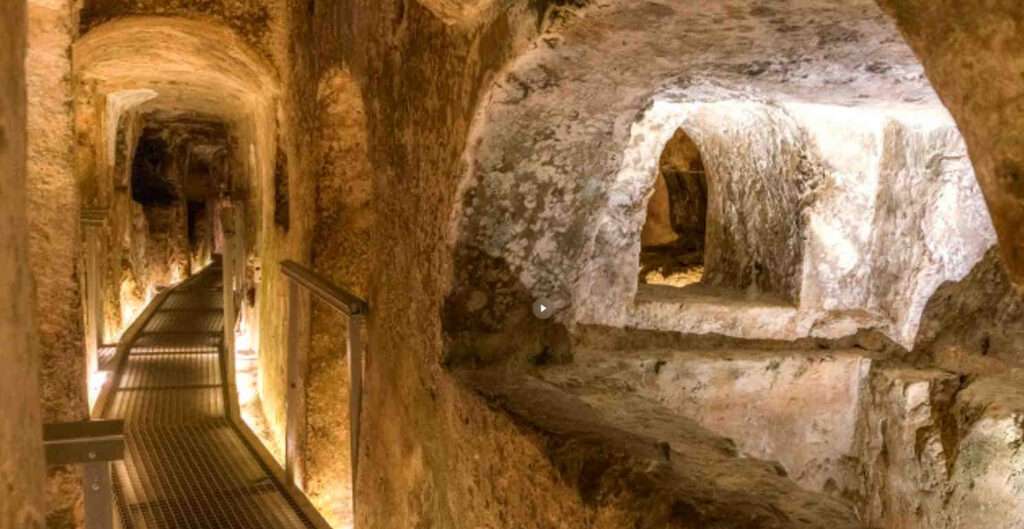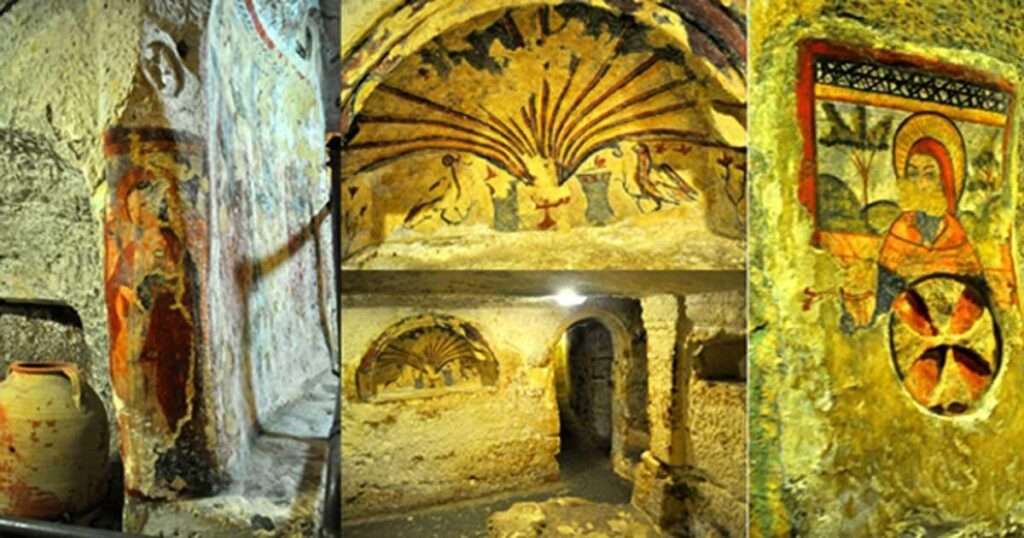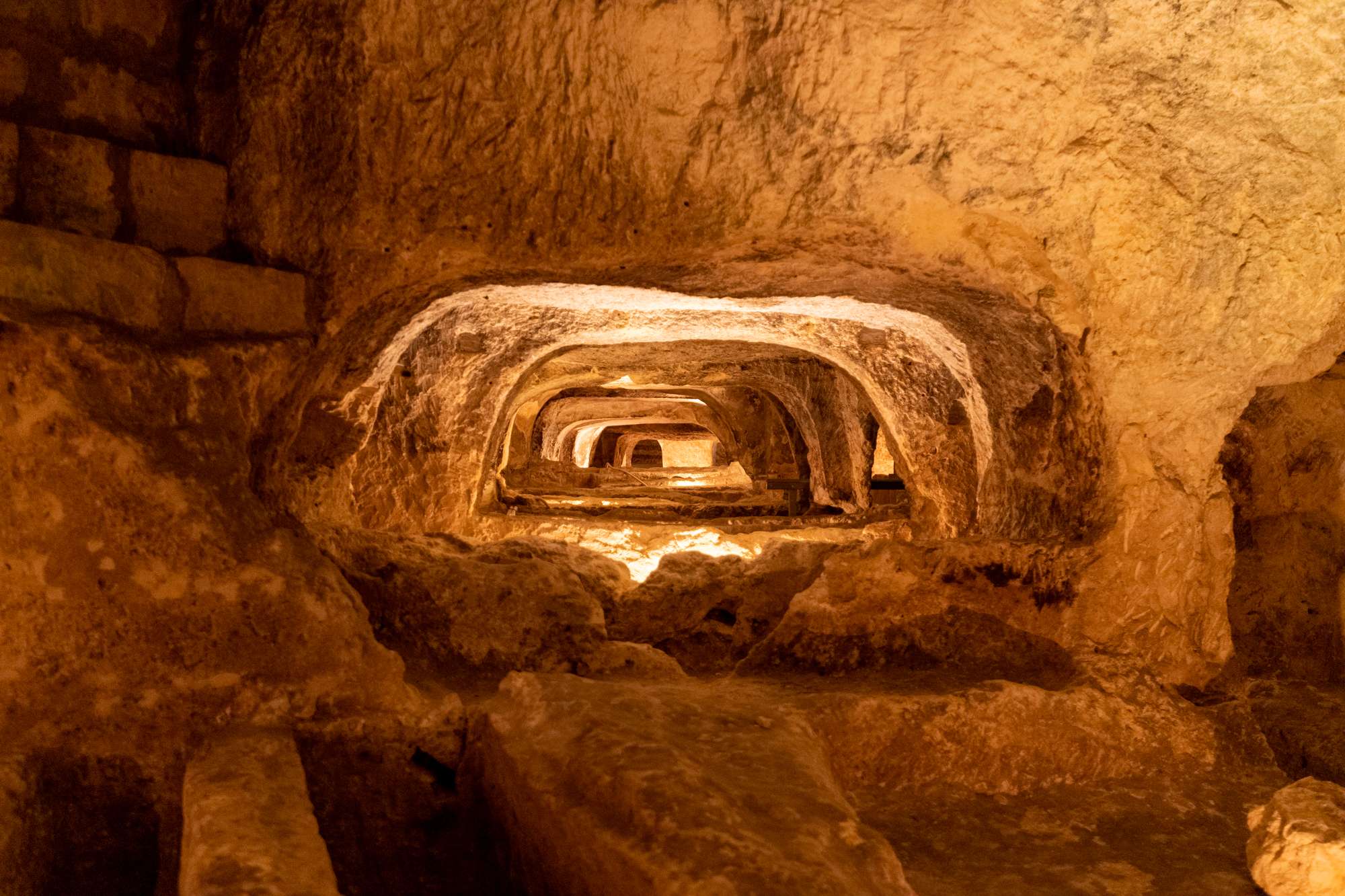Table of Contents
ToggleExploring Malta’s Catacombs
Into the Underground
When one thinks of Malta, images of sun-baked limestone, azure seas, medieval fortresses, and ancient temples often come to mind. Yet beneath the surface lies one of its most fascinating legacies: a network of subterranean tombs, passageways, and hypogea known collectively as the catacombs of Malta. These underground necropolises are portals into the island’s multicultural past — Roman, pagan, Jewish, and early Christian — and offer a quiet, eerie counterpoint to the brightness of its aboveground ruins.
A Brief Introduction: What Are Catacombs?
The word catacomb originally referred to subterranean cemeteries in Rome. In general, catacombs are man-made burial galleries carved out of rock, with corridors, burial niches, arched chambers, and communal spaces.
In Malta, they were carved mainly in the soft Globigerina limestone. Since Roman and later Christian law often forbade burials inside city limits, these underground cemeteries were created just outside the walls of ancient towns, especially the Roman-era city of Melite (modern Mdina and Rabat).
What makes the Maltese catacombs especially intriguing is how they reflect transitions in religious practices over centuries. Some contain pagan or Jewish features, while others were re-used or repurposed as Christianity spread across the islands.
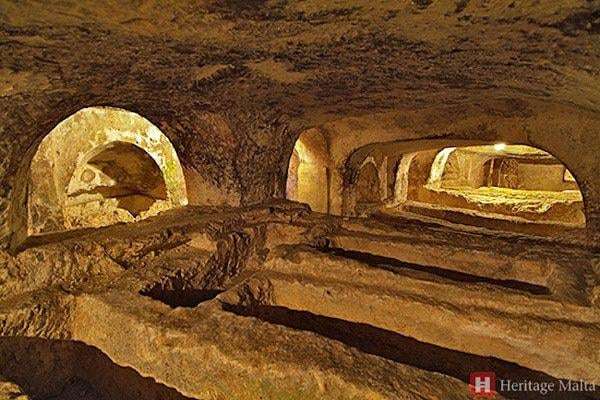
Major Catacomb Complexes in Malta
Malta hosts dozens of known subterranean tomb sites, though only a few are open to the public. The most notable include (Malta Heritage):
St. Paul’s Catacombs (Rabat / Mdina)
This is by far the best known and most visited complex. It lies just outside the old city of Mdina, in Rabat.
Covering over 2,000 square meters, the complex includes more than 30 hypogea, of which over 20 are accessible today. The tombs date from the 3rd to the 7th or 8th century AD.
Inside, visitors will find standard burial niches, canopy-style tombs with arched roofs, and some decorated with red-ochre inscriptions. A distinctive element of Maltese catacombs is the agape table: circular stone tables set in apses, where communities may have held commemorative meals in honor of the dead.
Over time, parts of the complex were altered. In the medieval period, some chambers were reworked into shrines with wall paintings. Later, the catacombs fell out of use, were occasionally repurposed as storage or stables, and during World War II, some sections were used as air-raid shelters.
Today, visitors walk through a dim, atmospheric labyrinth of tombs and passages, gaining a direct glimpse into Malta’s distant past.
St. Agatha’s Catacombs (Rabat)
Close to St. Paul’s, the St. Agatha site is smaller but historically significant. The two complexes together form an important funerary zone around the ancient city of Melite.
Ta’ Mintna Catacombs (Mqabba)
Located in the south of Malta, this complex consists of three hypogea carved into rock. Although more modest than St. Paul’s, Ta’ Mintna offers a quieter and more intimate exploration of Roman and late antiquity burial traditions.
Salina Catacombs
Near Naxxar, the Salina Catacombs are less known but still valuable. Their simpler architecture makes them an appealing stop for those looking to explore beyond the major tourist trail.
Għar Għerduf (Gozo)
Gozo also has catacombs, most notably Għar Għerduf. This site, partly cave-like, once contained several arched tombs. Though damaged over centuries, it remains the only early Christian catacomb in Gozo whose location is still known.
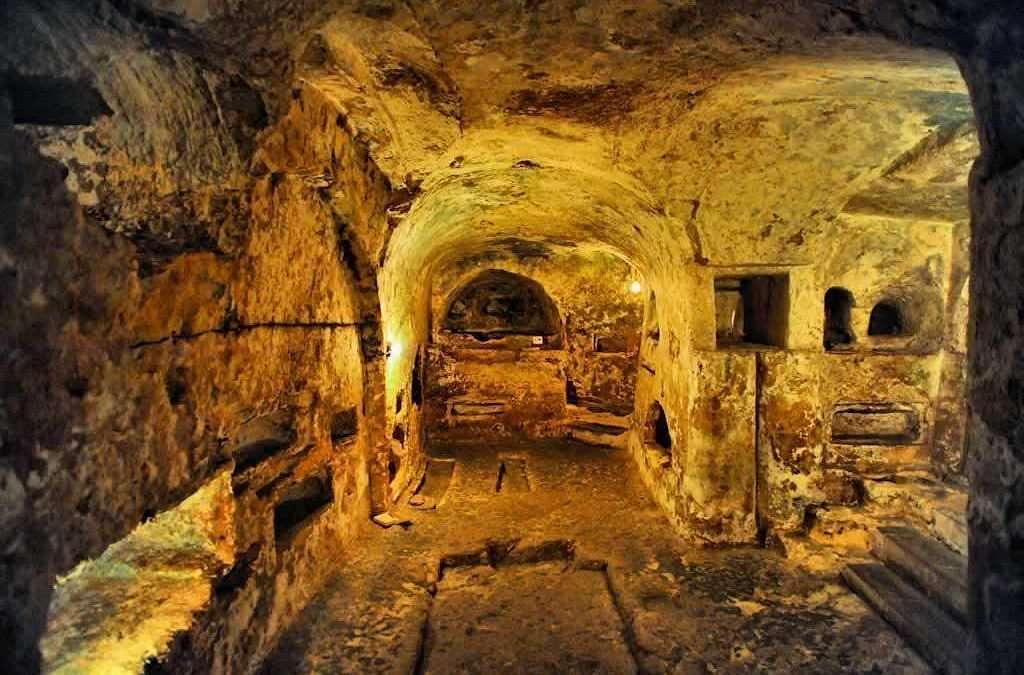
Themes and Insights: What the Catacombs Reveal
Religious and Cultural Coexistence
One of the most remarkable aspects of Maltese catacombs is the evidence of different faiths sharing the same burial grounds. Pagans, Jews, and Christians were sometimes buried side by side, showing a level of tolerance or at least practical coexistence within local communities. Over time, as Christianity became dominant, many of these tombs were reinterpreted or adapted for Christian use.
Ritual Feasting and Remembrance
The presence of agape tables reflects early traditions of communal meals in memory of the dead. Families or communities may have gathered inside the catacombs to share food and honor their ancestors. This practice highlights how burial places were also spaces of social memory and ritual continuity.
Continuity and Change
The Maltese catacombs reflect evolving patterns of burial: from Roman pagan customs to Jewish rites, to Christian reinterpretations, and finally abandonment. Later centuries saw some catacombs transformed into chapels or shrines, while others fell into obscurity. By the 19th century, renewed interest in archaeology brought them back into the public eye, sparking conservation and tourism efforts.
Archaeological Value
For historians and archaeologists, the catacombs are a treasure trove. They preserve evidence of shifting identities, religious beliefs, and burial art across centuries. They also serve as a physical reminder of Malta’s role as a crossroads of cultures in the Mediterranean.
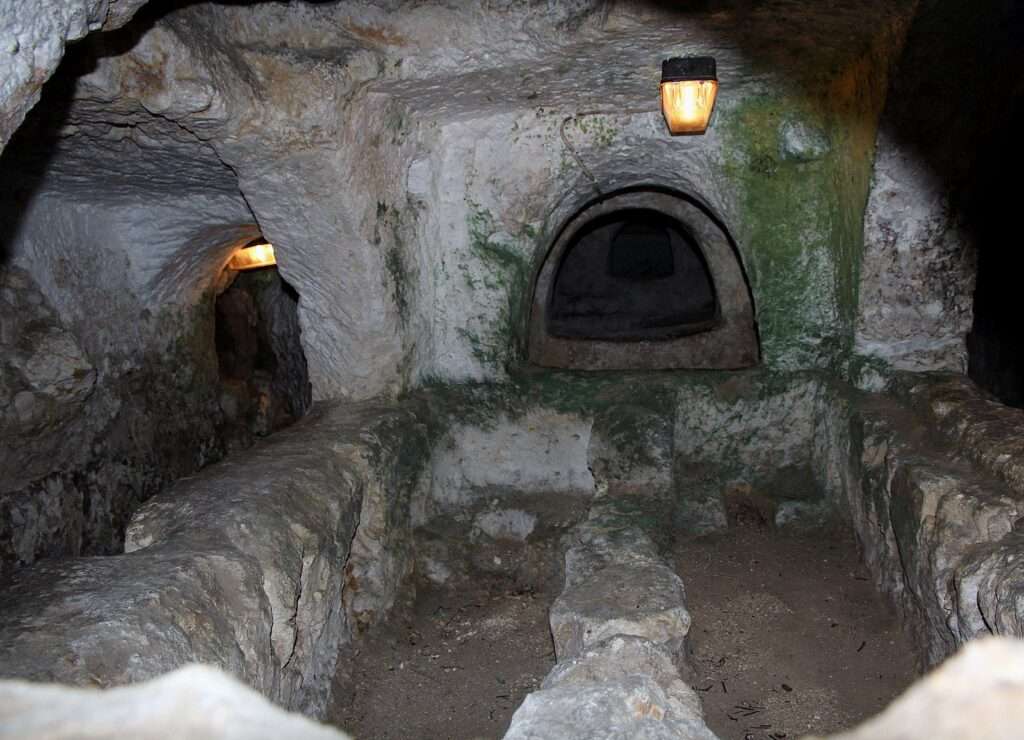
Tips for Visitors
If you’re planning a trip to Malta’s catacombs, here are a few practical pointers:
Start with St. Paul’s Catacombs in Rabat, the largest and most accessible complex.
Check opening hours in advance, as schedules may vary.
Wear sturdy footwear—the floors can be uneven, and the passages cool and damp.
Mind accessibility: not all areas are suitable for visitors with mobility challenges.
Combine your visit with a walk through Mdina or Rabat for a deeper historical context.
Seek out lesser-known sites like Ta’ Mintna or Salina if you want a quieter experience.
Be respectful: avoid touching walls or frescoes, and keep noise to a minimum.
The catacombs of Malta are more than eerie underground chambers — they are powerful reminders of the island’s layered history. Walking through their shadowy corridors, past niches that once held human remains, one feels an intimate connection with the rituals and beliefs of past communities.
They remind us that Malta has always been a place of cultural intersections, where traditions mingled and evolved. For today’s visitors, descending into the catacombs offers not just a glimpse into death and remembrance, but also into resilience, coexistence, and the continuity of memory.
For those willing to step off the sunlit streets and into the subterranean silence, Malta’s catacombs provide an unforgettable journey through time — dark, hushed, and profoundly human.
